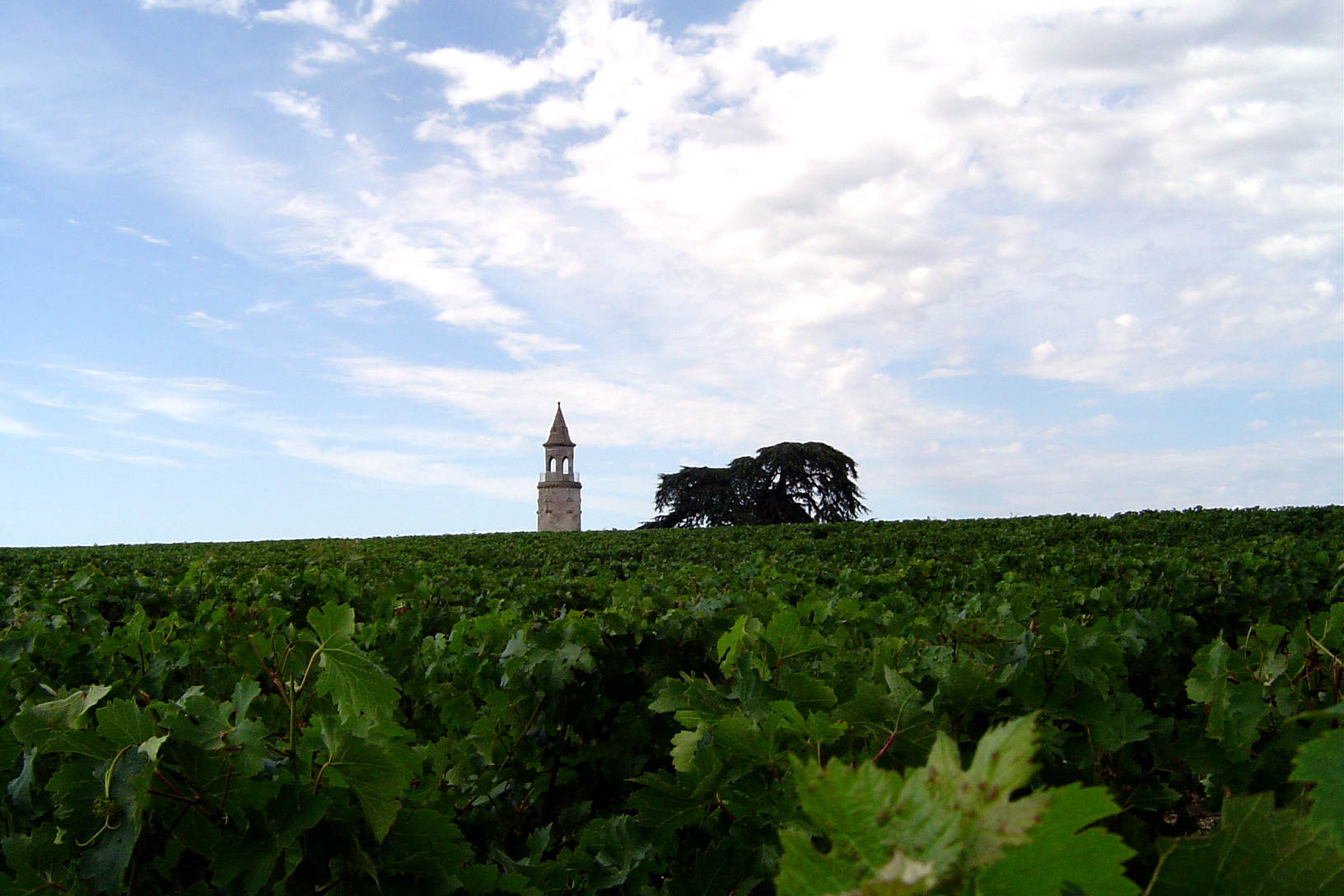- Haut-Médoc AOC
Infobox Wine Region
name = Haut-Médoc AOC

official name =
other name =
type =Appellation d'origine contrôlée
year = 1936
wine years =
country =France
part of = Bordeaux Left Bank,Médoc AOC
similar =
sub regions =Margaux AOC ,Listrac-Médoc AOC ,Moulis-en-Médoc AOC ,Saint-Julien AOC ,Pauillac AOC ,Saint-Estèphe AOC
season =
climate region =Oceanic climate
heat units =
precipitation =
soil = gravel, chalk, clay
total size = convert|4643|ha|acre|lk=on|abbr=on
planted =
vineyards =392
grapes =Cabernet Sauvignon ,Merlot ,Petit Verdot ,Malbec ,Cabernet Franc ,Carménère
varietals =
wineries =
wine produced = 32,000,000 bottles convert|255000|hl|USgal|lk=on| abbr=on
designation =
comments =Haut-Médoc is an "Appellation d'Origine Contrôlée" (AOC) for
wine in theBordeaux wine region of southwesternFrance , on the Left Bank of theGironde estuary . Covering a large part of the viticultural strip of land along theMédoc peninsula, the zone covers approximately convert|60|km|mi of its length, .As defined by the original
Institut National des Appellations d'Origine (INAO) decree of November 14, 1936, its southern edge borders the city ofBordeaux and theMédoc AOC to the north, encompassing fifteen communes exclusive to the appellation, while at the same time it enclaves six appellations made up of nine communes (Margaux AOC ,Listrac-Médoc AOC ,Moulis-en-Médoc AOC ,Saint-Julien AOC ,Pauillac AOC andSaint-Estèphe AOC ) that are technically wine-making communes of Haut-Médoc. Similarly, Haut-Médoc is a sub-appellation of the Médoc AOC.cite book|last =Peppercorn |first =David |title =Bordeaux |publisher = Mitchell Beazley |date =2003 |location =London| isbn= 1-84000-927-6 |pages =p.240-284 ]Of Haut-Médoc's fifteen wine-producing communes, eight are located along the waterfront of
Garonne and Gironde: Blanquefort,Parempuyre , Ludon, Macau,Arcins ,Lamarque , Cussac andSaint-Seurin-de-Cadourne . Seven communes lie inland: Le Taillan,Le Pian-Médoc ,Avensan ,Saint-Laurent-Médoc . Saint-Sauveur, Cissac andVertheuil .Few of the estates falling within the Haut-Médoc borders were included in the
Bordeaux Wine Official Classification of 1855 (as all but six of the 62 are located within the AOCs Margaux, Saint-Julien, Pauillac and Saint-Estèphe), but several were included in the eventually discontinued classificationCru Bourgeois .cite book|last =Lichine |first =Alexis |title =Alexis Lichine's Encyclopedia of Wines and Spirits |publisher = Cassell & Company Ltd. |date =1967 |location =London|pages =p.347-353 ]History
For most of its history, the Haut-Médoc was a vast region of
salt marsh es used for animalgrazing rather thanviticulture . In the 17th century, Dutch merchants began an ambitiousdrainage project to convert the marshland into usable vineyard area. Their objective was to provide the British market a wine alternative to theGraves andPortuguese wine s that were dominating the market. Using technology that was advanced for that time, the Dutch were able to convert enough marshland to allow large estates to form all along the Gironde. Soon the Bordeaux wine regions of Margaux, Saint-Julien, Pauillac and Saint-Estèphe took shape. By the 19th century, the wine region of the Haut-Médoc was one of the most prosperous in France, with wines that had an international reputation that would be unparalleled till the late 20th century. J. Robinson (ed) "The Oxford Companion to Wine" Third Edition pg 434 Oxford University Press 2006 ISBN 0198609906 ]Haut-Médoc AOC
The area covers ca. 4,600 hectares of declared vineyards, constituting 28.5% of the Médoc total, annually producing on average 255,000 hectolitres of wine. The variation in types of soil is greater than other "appellations" in the region, ranging from less than ideal terrain, to conditions on a par with some of the enclaved appellations of more celebrated reputation.Cite web|last= Kissack |first= Chris, thewinedoctor.com|title=Médoc, Médoc |url= http://www.thewinedoctor.com/regionalguides/bordeaux10medocmedoc.shtml ]
Of the permitted
grape varieties of Haut-Médoc, 52% of the viticultural area is planted withCabernet Sauvignon , with additional cultivation ofMerlot ,Petit Verdot and to a small degreeMalbec (locally called "Cot"). Also permitted under the regulations of the AOC are the varietiesCabernet Franc andCarménère .The INAO specifiactions demand the following production norms: a high planting density, a minimum of 6,500 plants per hectare, and minimum of sugar, Convert|178|g|oz| abbr=on per litre of
must , maximum base yield of 48 hecolitre per hectare, and a minimumalcohol by volume of 10%.Cite web|last=Medoc.com|title=Haut-Médoc dossier| url= http://www.haut-medoc.com/rubriques-eng/ap-hautmedoc.htm ]Estates
Of the 392 viticultural properties of Haut-Médoc, 150 participate in winemaking cooperatives, the other 242 being independent wineries.
Notes and references
a. Note_label|A|a|none "
Cru Bourgeois " as a term of classification since 1932, was annulled in 2007,Cite web|last= Anson |first= Jane, "Decanter"|title= Cru Bourgeois classification officially over |url= http://www.decanter.com/news/128635.html|date=July 10, 2007] and is set to be reintroduced in 2009.Cite web|last= Anson |first= Jane, "Decanter"|title=Cru Bourgeois revived|url= http://www.decanter.com/news/184450.html |date=February 26, 2008] ;General
* [http://bordeaux.com/Tout-Vins/Appellation.aspx?contentId=94&culture=en-US&country=CA Haut-Médoc] Bordeaux.com, Le Conseil Interprofessionnel du Vin de Bordeaux (CIVB)
* [http://www.inao.gouv.fr/public/produits/showTexte.php?id_txt=1004 Haut-Médoc] AOC decree, INAO fr_icon;Footnotes
Wikimedia Foundation. 2010.
